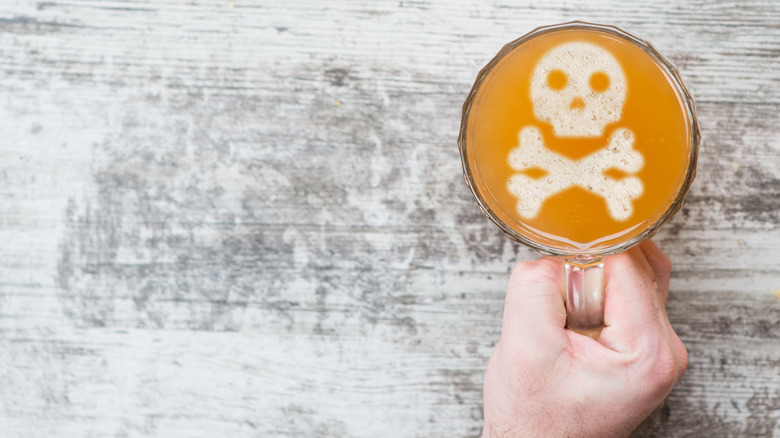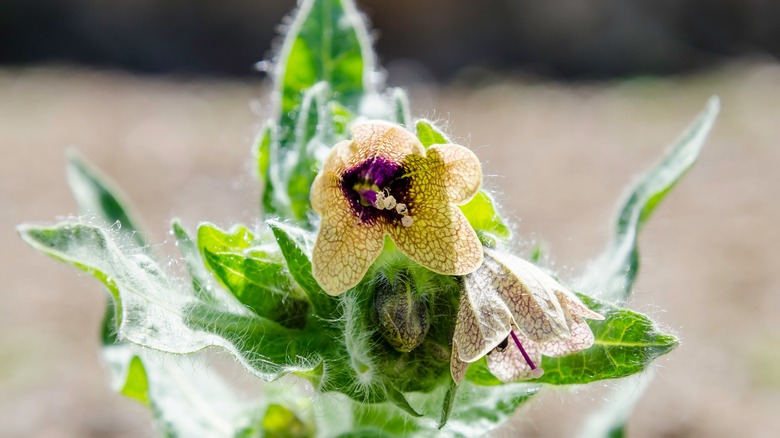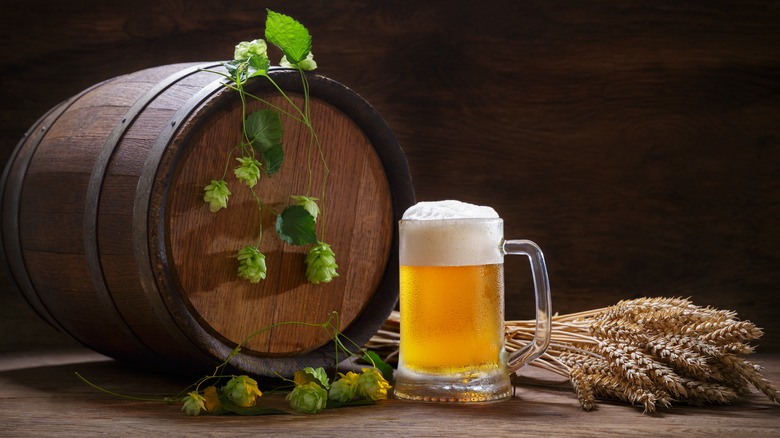The Beer That Had Medieval Europeans Hallucinating
It's no secret that drinking too much beer can make your head feel like it's spinning. But things could get way worse for beer drinkers in the Middle Ages, when the drink could cause full-on hallucinations. The culprit for such false visions, sounds, and sensations was an ingredient called black henbane, which brewers often added to ales.
A member of the nightshade family, black henbane, or Hyoscyamus niger, is a toxic plant that was intentionally added to brews to increase the sensation of intoxication. Now, it's certainly possible that brewers stumbled onto this discovery by accident. At the time, the general practice was to make beer without hops. Instead, beer makers flavored their goods with plants, herbs, and various other flora, collectively known as gruit. Black henbane could have added some desirable bitterness, and could obviously intoxicate thirsty patrons quicker than poison-free ale.
Perhaps the most dangerous characteristic of black henbane is that it causes dry mouth, causing the beer drinker to be increasingly thirsty, and thus, wanting to drink more beer. This was problematic, because while a small bit of the plant could cause a drunk sensation, too much of it could result in extreme hallucination, and even death. Drinkers would have needed to consume copious amounts of beer to reach this extreme, but smaller portions could still cause strange behavior and severely altered mental states.
The outlawing of henbane and its association with witches
By the beginning of the 16th century, the presence of black henbane in beers and ales began to dwindle. Around this time, brewers were discovering that it was cheaper to make their goods with hops rather than gruit, and that the resulting beer had a longer shelf life (even though most beer doesn't last as long as you think). By the year 1516, Germany had outlawed henbane in the country's beer production, as part of the German Purity Laws, but not every country across Europe followed suit so quickly. By the end of the 16th century, henbane's concerning properties were largely known — in fact, William Shakespeare recognized its toxicity, and included the plant in his description of the poison that killed King Hamlet in his iconic 1603 play, "Hamlet."
Many women were involved in brewing beer in the Middle Ages leading into the Age of Reformation, and they continued to use black henbane in their brewing methods, as it had been common practice for hundreds of years. Because of this and the dark, ominous reputation the plant came to obtain, black henbane became associated with witches, which many women brewers were falsely accused of being. In his 1827 book, "Homeopathic Materia Medica," William Boericke wrote that henbane ingestion made one feel "as if some diabolical force took possession of the brain and prevented its functions [and] causes a perfect picture of mania of a quarrelsome and obscene character."
Henbane in medicine
While medieval brewers used black henbane to create bitterness and a buzz, the toxic plant has been used extensively throughout history for various purposes. It's true that it garnered a bit of a negative reputation surrounding potions and witchcraft, but its history is overwhelmingly associated with positive medicinal purposes. In various civilizations from ancient Greece and Britain to China and Iran, black henbane has been used to treat such ailments as insomnia, chronic pain, toothache, epilepsy, psychosis, and drug addiction.
Despite these potential healing properties, it's best to avoid the ingestion of black henbane — while hyoscyamine can still be found in modern western medicine, it is poisonous, and should not be taken without a doctor's supervision. Fortunately, it's difficult to find and purchase beer made with gruit these days. Instead, stick with hops for beer, and leave the henbane in the doctor's and chemist's hands. After all, hops provides all the necessary bitterness to your beer, and gives you a pleasant, rather than terrifying, buzz. And if you're still curious about the effects of black henbane in beer, just remember that the average life expectancy for males in the Middle Ages was 31.3 years. While black henbane wasn't the sole reason for this, it surely didn't help matters.


